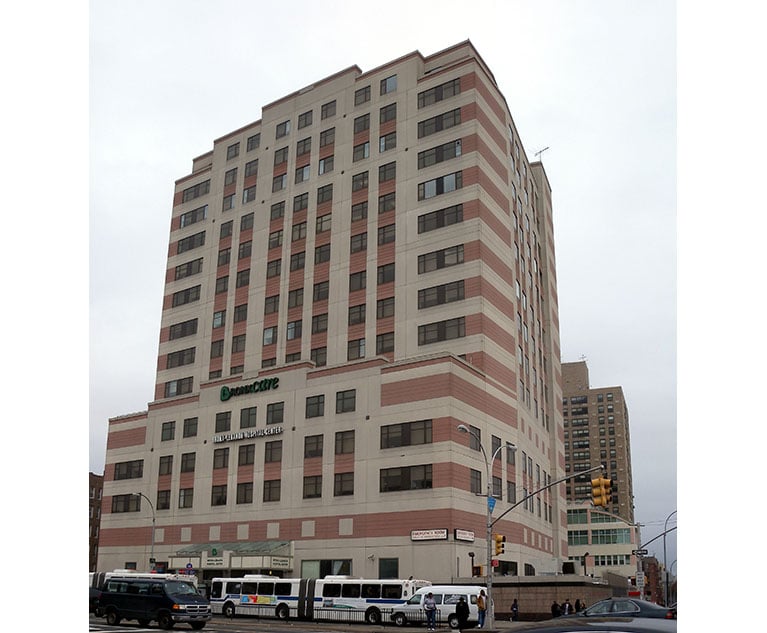When the legislature takes the formal step of titling a bill, itis usually trying to keep the public's attention focused on thepositive aspects of the bill while downplaying some of itsless-appealing aspects. Such is the case when the legislature namedthis year's version of the property reform bill the “Homeowners'Bill of Rights Act.” Depending on one's perspective, this eithersignals a victory for consumers or another round of industryrestrictions. In truth, it is a little bit of both. More thananything, however, it is largely a victory for the status quo.While there are positive aspects to the bill, it doesn't change onefundamental fact: the burden of paying for hurricane-related costsrests squarely on the backs on policyholders.
|There is no obvious sign that this will change in the nearfuture. Why? Governor Crist swept into office in 2006 running on aplatform that mainly focused on reversing the trend ofupward-heading homeowners' rates. Having survived one hurricaneseason without significant losses, the state could find nocompelling reason to change the formula. Hence, lawmakers continuedto rely on Citizens Property Insurance Corporation, the FloridaHurricane Catastrophe Fund, and policyholder assessments to pick upany losses.
|Along with this stamp of approval for the status quo came thetightening of industry regulations, ending arbitration andextending the prohibition of the use-and-file rating method. Thus,even though the bill is not as drastic as its 2007 predecessor, itlargely codifies the same features, the same risks, and the samepromises for another year.
|Sink on the Cat Fund
|Although most lawmakers' attentions were centered on Citizens,and rightly so given its 1.2 million policyholders, the mostsignificant proposal was one that didn't make the cut. Proving onceagain that when a moving force meets an immovable object, acollision will invariably result, Chief Financial Officer Alex Sinkfaced the reality of what the legislature will, or moreimportantly, what it will not do during an election year. In thiscase, the necessary process of reducing the financial burden on theCat Fund began.
|The Cat Fund is the key to dealing with homeowners' rates, asthe quasi-state agency offers reinsurance well below the privatemarket. When Crist and the legislature searched for a way toartificially decrease rates, the only real solution was to increasethe availability of affordable reinsurance to provide insurers witha viable financial base. Lawmakers certainly met that goal whenthey increased the Cat Fund's single season capacity last year by$12 billion — from $16 billion to $28 billion.
|In what Sink characterized as a “modest proposal,” she pushedthe legislature to reduce the so-called Temporary Increase inCoverage Limits (TICL) program from its current level of $12billion to $9 billion. The program had offered the coverage for apremium of 2.2 percent of an insurer's portion of the $12 million,a pittance compared to the 10-to-20 percent charged by the privatemarket at that time. At that rate, insurers snatched up $11.5billion of the TICL coverage for a mere $242 million in totalpremiums.
|However, Sink, some lawmakers, and the industry realized thatthe $28 billion far exceeded what could be raised in the capitalmarkets. Right now, the Cat Fund has approximately $2 billion incash and another $6.3 million in pre-event notes, for which it iscurrently making payments. To reach its ceiling of a potential $28billion liability, the fund would therefore have to go to thecapital markets and convince investors to pour $25 billion in30-year bonds to ensure the Cat Fund could fully reimbursecarriers. The single largest municipal tax-exempt, long-term debtissuance in the country was only $6 billion. Many experts didn'tbelieve the Cat Fund could raise the $25 billion at once, andthought that it would probably take several bond issues over aperiod of 12-to-18 months.
|Sink's proposal ran straight into that public policy debate ofwhat is the worse of two options: rates or assessments. During anelection year, assessments was the clear answer. When lawmakersrealized that reducing the fund's exposure by $3 billion couldincrease homeowners' premiums from between 1.5 to 3.2 percent onaverage, it was a deal breaker for most lawmakers
|However, Tara Klimek, a spokesperson for Sink, said that the CFOis far from done with the issue despite this year's failure.“Obviously, she is disappointed and concerned,” Klimek said. “Hermain message is still to reduce risk, and this issue is not goingto go away.”
|Citizens' Liabilities
|There is an argument to be made that the Sink's Cat Fundproposal might have garnered more support if not for the fact thatCitizens accounts for 40 percent of the fund's liabilities. Itseems that lawmakers regard Citizens as their largest gamble. Forexample, consider the simplest change that could have a majoreffect on the insurer. Namely, the continuation of the previousrate freeze from January 2009 until 2010 that actually keeps ratesat 2007 levels. This alone caused the industry to link the state'slargest insurer with the burden on the Cat Fund.
|Sam Miller, executive vice president of the Florida InsuranceCouncil, pointed out that extending the latitude to Citizens toincrease rates would have brought more stability to the market.“That equates to $150 million in claim-paying capacity that thegovernment insurer could have had but doesn't now,” he said. “Inturn, we could've placed $150 million less stress on the Cat Fund,had rates not been artificially frozen.”
|Dr. David Sampson, president and CEO of the Property CasualtyInsurers of Association of America, echoed Miller's comments. “Weremain convinced that Floridians face thousands of dollars ininsurance policy assessments if a major storm hits, and thestate-run insurer Citizens does not have enough cash on hand topotentially pay claims,” he said. “Whatever post-storm costs remainthat the state cannot collect in bond revenue will be shifted tothe taxpayers, who will then be on the hook through assessments ontheir property and auto insurance bills.”
|Adding to Citizens' exposure is another change that expands theeligibility for high-value homes. Current law provides thatpolicyholders with homes valued at $1 million or more are eligiblefor coverage if they cannot find it with one admitted carrier andthree surplus lines carriers. The bill raises that amount to $2million, to take effect in Jan. 2009.
|From agents' perspectives, they dodged one important bullet.Citizens' President Scott Wallace lobbied ardently for the insurerto have the authority to issue multi-peril policies statewide.Agents heavily opposed the measure because they could potentiallylose the ex-wind coverage and, despite the fact that consumers maypay lower rates, they could lose the discounts obtained when theyinsure their homes and vehicles with the same company.
|Florida Association of Insurance Agents Vice President ScottJohnson said that an aggressive public relations effort was onereason the House failed to sign off on the Senate proposal. He alsosaid it would have been bad public policy, given the insuranceburden already placed on the state. “I can't imagine how Citizenscould take on more policies and more exposure,” he said. “That isthe key. How much more is our state willing to fund?”
|Lawmakers did at least offer some indication that they werewilling to explore reverting Citizens to its market-of-last-resortstatus. The bill mandates that a Citizens' Property InsuranceCorporation Mission Review Task Force review the insurer's role inthe market. However, taking into consideration the rate structureand its population, even those supporting the idea admit thatreversing the role of Citizens in the market will be a tall orderat best.
|Still, it is possible that the task force could signal the endof Citizens' rate freeze. Sink supports a proposal by SenatePresident Kevin Pruitt (R-Port Saint Lucie), which would havecreated a “glide path” to increase the insurer's rates. That way,instead of raising rates by a substantial amount — it is estimatedthat a 40-to-50 percent increase would be necessary to makeCitizens' rates actuarially sound — the state could raise rates insmaller increments. This would prevent sticker shock forpolicyholders. Klimek said this approach would create a gradualdrop off in exposure instead of “postponing the problem.”
|Industry Setbacks
|The sheer size of the numbers dictated that most of thelawmakers' attentions were focused on the state-run Citizens andCat Fund, but the industry didn't go unnoticed. Based on thefindings of the Senate Select Committee on Property InsuranceAccountability, regulators obtained the justification they neededto make various legislative changes that they have been advocatingfor years.
|For example, for a second year the law prohibits insurers fromusing a use-and-file option to implement property rate increases.Under the use-and-file option, insurers are able to raise ratesprior to securing regulatory approval. If regulators regarded therates as excessive, then the insurer was required to return thatportion of the increase to their policyholders. For that reason,the industry has long argued the state was a de facto file-and-usestate, and the law change is likely to have little effect.
|The same situation is applicable to suspending arbitration toresolve rate disputes. Last year, the state suspended the methoduntil Jan. 2009. This proved to be a first step, as the bill nowfully repeals the rate dispute method. Given the fact that ratearbitration has been revoked, lawmakers set provisions so thatinsurers would have an expedited path to resolve rate disputeswithin a timely manner. Specifically, the law requires the FloridaState Division of Administrative Hearings (DOAH) to hold a hearingwithin 30 days after an insurer requests a rate hearing. The DOAHjudge must issue an order within 30 days of the hearing.
|Additionally, regulators must issue their own final orderswithin 30 days of receiving the judge's report.
|Insurance Commissioner Kevin McCarty said these changes would domuch to benefit consumers. “The provisions of the bill are veryimportant,” he said. “They would prevent insurance companies frombypassing the OIR and increasing rates through the use-and-fileoption.
|Unfinished Business
|After all of the property changes, one would think that thelegislature and the industry would reach an end point. With Sink'spromise to pursue her reduction in the Cat Fund's liability,however, it is unlikely that property will no longer be alegislative issue. There are still concerns about the use of modelsto calculate potential hurricane losses and a host of open recordlaw changes.
|Moreover, there are other substantive changes that could alterthe forecast of other sections of the market. David Daniel, vicepresident of government affairs for the Florida Chamber, said thebusiness community would continue to pursue legislation that wouldallow business owners to purchase non-assessable policies exemptingthem from paying Citizens, the Florida Hurricane Catastrophe Fund,and the Florida Insurance Guaranty Association assessments. Inexchange for paying higher rates, the policyholders would besubtracted from Citizens' assessment base and exempt from payingany assessments levied by the insurer.
|The business community's position is that business owners optingto buy non-assessable policies and pull out of the insurer'sassessment base would be offset by the decrease in the insurer'sexposure. Experts note there is no way to actuarially judge thatproposition, which leaves open whether an exodus of businesses tothe private market under non-assessable policies would simplyincrease the assessment burden on the remaining policyholders.
|Tom Enright, president of surplus broker Enright and Wilson,said the industry survived the session fairly well. He did commentthough that the non-assessable bill would have been tough toswallow because it would have created an uneven playing field. “TheChamber came real close to getting it done,” he said.
Want to continue reading?
Become a Free PropertyCasualty360 Digital Reader
Your access to unlimited PropertyCasualty360 content isn’t changing.
Once you are an ALM digital member, you’ll receive:
- All PropertyCasualty360.com news coverage, best practices, and in-depth analysis.
- Educational webcasts, resources from industry leaders, and informative newsletters.
- Other award-winning websites including BenefitsPRO.com and ThinkAdvisor.com.
Already have an account? Sign In
© 2024 ALM Global, LLC, All Rights Reserved. Request academic re-use from www.copyright.com. All other uses, submit a request to [email protected]. For more information visit Asset & Logo Licensing.








